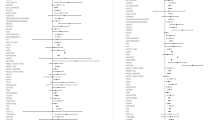Summary
Numerous prospective studies have demonstrated a strong relationship between bone mass and fracture risk. The fact that the bone mass distributions of fracture and nonfracture cases overlap does not necessarily indicate a shortcoming of bone mass, but might instead be due to the sporadic nature of falls and the influence of other fracture risk factors. The recent finding that prevalent fractures are strong predictors of fracture risk, independent of bone mass, suggests (but does not prove) that there may be other, potentially measurable fracture risk factors that complement, and act independently of, bone mass. This paper reviews possible mechanisms by which prevalent fractures might serve as etiologic risk factors, or as surrogate indicators of other risk factors. Potential risk factors other than bone mass and prevalent fractures are also considered. Whether or not etiologic fracture risk factors other than bone mass can be identified, it appears that treatments that influence bone will be most effective if begun early,before bone strength becomes impaired and fractures begin to occur.
Similar content being viewed by others
References
Cummings SR (1990) Prevention of osteoporotic fractures: what we need to know. In: Christiansen C, Overgaard K (eds) Osteoporosis 1990. Osteopress ApS, Copenhagen, Denmark, pp 48–54
Melton LJ III, Ilstrup DM, Beckenbaugh RD, Riggs BL (1982) Hip fracture recurrence. A population-based study. Clin Orthop 167:131–138
Gardsell P, Johnell O, Nilsson BE, Nilsson JA (1989) The predictive value of fracture, disease, and falling tendency for fragility fractures in women. Calcif Tissue Res 45:327–330
Murray TM, Harrison JE, Bayley TA, et al (1990) Fluoride treatment of postmenopausal osteoporosis: age, renal function, and other clinical factors in the osteogenic response. J Bone Miner Res 5(suppl 1):S27–535
Ross PD, Davis JW, Epstein R, Wasnich RD (1991) Pre-existing fractures and bone mass predict vertebral fracture incidence. Ann Intern Med 114(11):919–923
Ross PD, Genant HK, Davis JW, Miller P, Wasnich RD (1993) Predicting vertebral fracture incidence from prevalent fractures and bone density among non-black, osteoporotic women. Osteoporosis Int 3:120–127
Wasnich RD, Davis JW, Ross PD (1992) Both spine and nonspine prevalent fractures increase the risk of new spine fractures (abstract) J Bone Miner Res 7(suppl 1):S138
Ross PD, Davis JW, Epstein RS, Wasnich RD (1992) Ability of vertebral dimensions from a single radiograph to identify new fractures. Calcif Tissue Int 51:95–99
Powell JN, Waddell JP, Tucker WS, Transfeldt EE (1989) Multiple non-contiguous spinal fractures. J Trauma 29(8):1146–1151
Henderson RL, Reid DC, Saboe LA (1991) Multiple noncontiguous spine fractures. Spine 16(2):128–131
Heaney RP (1992) The natural history of vertebral osteoporosis. Is low bone mass an epiphenomenon? Bone 13:S23-S26
Yano K, Wasnich RD, Vogel JM, Heilbrun LK (1984) Bone mineral measurements among middle-aged and elderly Japanese residents in Hawaii. Am J Epidemnol 119:751–764
Heilbrun LK, Kagan A, Nomura A, Wasnich RD (1985) The origins of epidemiologic studies of heart disease, cancer and osteoporosis among Hawaii Japanese. Hawaii Med J 44:294–296
Wasnich RD, Ross PD, Heilbrun LX, Vogel JM (1985) Prediction of postmenopausal fracture risk with bone mineral measurements. Am J Obstet Gynecol 153:745–751
Hui SL, Slemenda CW, Johnston CC Jr (1989) Baseline measurement of bone mass predicts fracture in white women. Ann Intern Med 111:355–361
Black DM, Cummings SR, Genant HK, Nevitt MC, Palermo L, Browner W (1992) Axial and appendicular bone density predict fractures in older women. J Bone Miner Res 7:633–638
Lanyon LE (1992) The success and failure of the adaptive response to functional load-bearing in averting bone fracture. Bone 13:517-S21
Faulkner KG, Gluer CC, Palermo L, Black D, Genant HK, Cummings SR (1992) Geometric measurements from dual x-ray absorptiometry scans predict hip fracture. J Bone Miner Res 7(suppl 1):S117
Horsman A, Marshall DH, Peacock M (1985) A stochastic model of age-related bone loss and fractures. Clin Orthop 195:207–215
Yamagata M, Moriya H, Goto S, Takahashi K, Tanno T (1989) Relationship between mechanical strength and bone mineral density of the vertebral shell and core (abstract) J Bone Miner Res 4 (suppl):S326
Geusens P (1992) Photon absorptiometry in osteoporosis. Orientaliste, Leuven, Belgium
Brinckmann P, Biggemann M, Hilweg D (1989) Prediction of the compressive strength of human lumbar vertebrae. Spine 14:606–610
Biggemann M, Hilweg D, Seidel S, Horst M, Brinckmann P (1991) Risk of vertebral insufficiency fractures in relation to compressive strength predicted by quantitative computed tomography. Eur J Radiol 13:6–10
Gardsell P, Johnell O, Nilsson BE (1991) The predictive value of bone loss for fragility fractures in women: a longitudinal study over 15 years. Calcif Tissue Res 45:327–330
Wasnich RD, Ross PD, MacLean CJ, Vogel JM, Davis JW (1989) A comparison of single versus multi-site BMC measurements for assessment of spine fracture probability. J Nucl Med 30:1166–1171
Author information
Authors and Affiliations
Rights and permissions
About this article
Cite this article
Ross, P.D., Davis, J.W. & Wasnich, R.D. Bone mass and beyond: Risk factors for fractures. Calcif Tissue Int 53 (Suppl 1), S134–S138 (1993). https://doi.org/10.1007/BF01673422
Received:
Accepted:
Issue Date:
DOI: https://doi.org/10.1007/BF01673422




